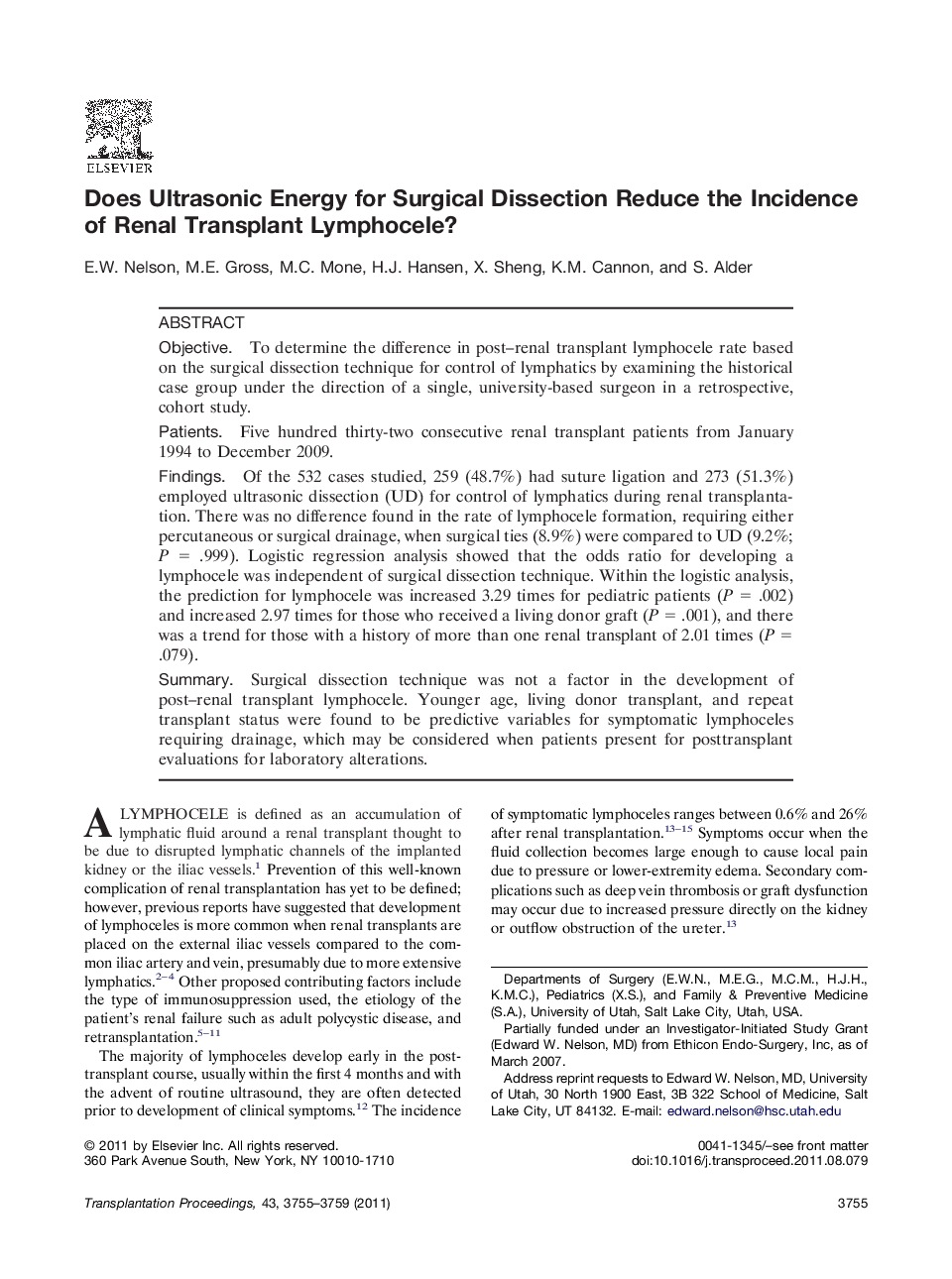| Article ID | Journal | Published Year | Pages | File Type |
|---|---|---|---|---|
| 6248961 | Transplantation Proceedings | 2011 | 5 Pages |
ObjectiveTo determine the difference in post-renal transplant lymphocele rate based on the surgical dissection technique for control of lymphatics by examining the historical case group under the direction of a single, university-based surgeon in a retrospective, cohort study.PatientsFive hundred thirty-two consecutive renal transplant patients from January 1994 to December 2009.FindingsOf the 532 cases studied, 259 (48.7%) had suture ligation and 273 (51.3%) employed ultrasonic dissection (UD) for control of lymphatics during renal transplantation. There was no difference found in the rate of lymphocele formation, requiring either percutaneous or surgical drainage, when surgical ties (8.9%) were compared to UD (9.2%; P = .999). Logistic regression analysis showed that the odds ratio for developing a lymphocele was independent of surgical dissection technique. Within the logistic analysis, the prediction for lymphocele was increased 3.29 times for pediatric patients (P = .002) and increased 2.97 times for those who received a living donor graft (P = .001), and there was a trend for those with a history of more than one renal transplant of 2.01 times (P = .079).SummarySurgical dissection technique was not a factor in the development of post-renal transplant lymphocele. Younger age, living donor transplant, and repeat transplant status were found to be predictive variables for symptomatic lymphoceles requiring drainage, which may be considered when patients present for posttransplant evaluations for laboratory alterations.
